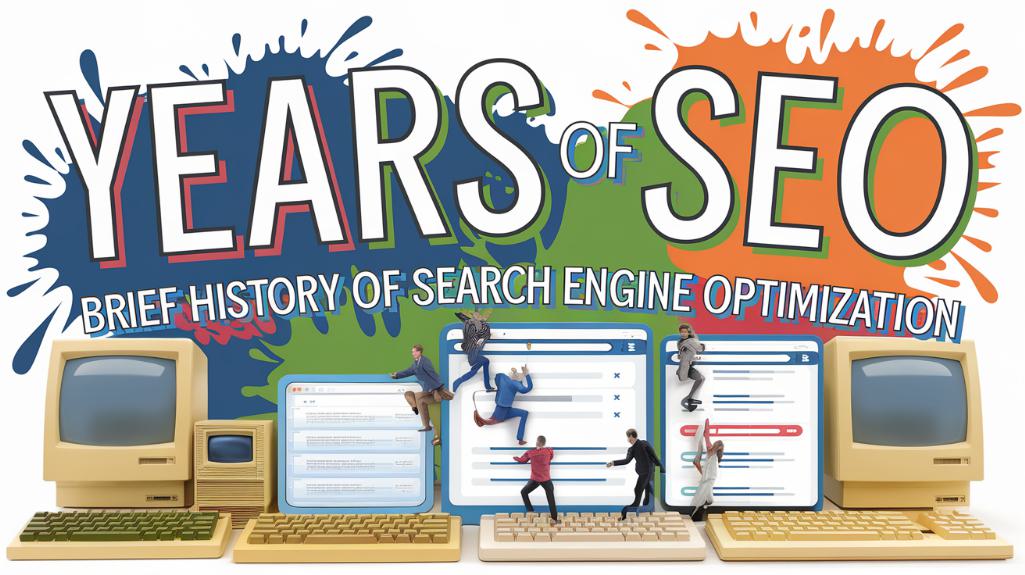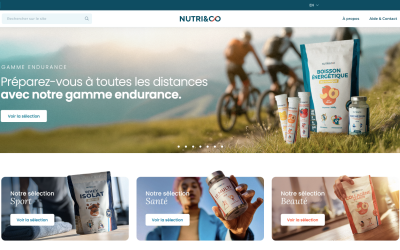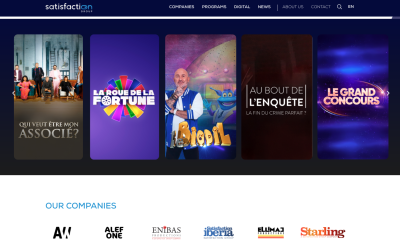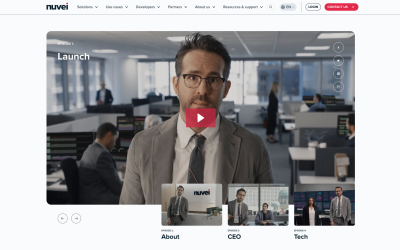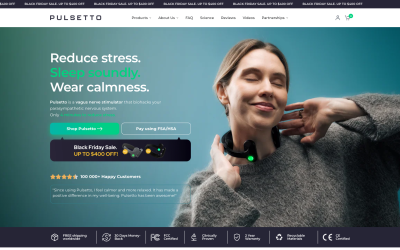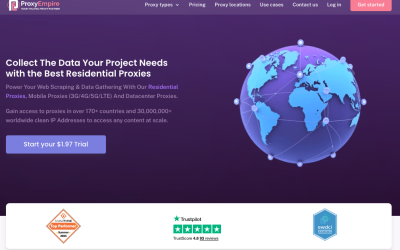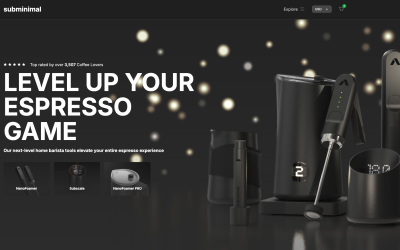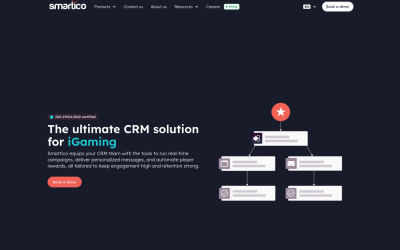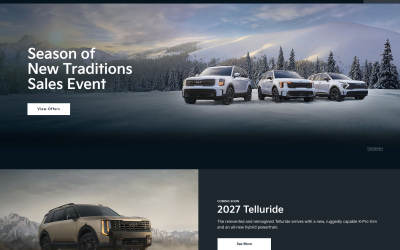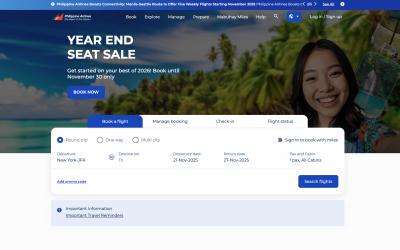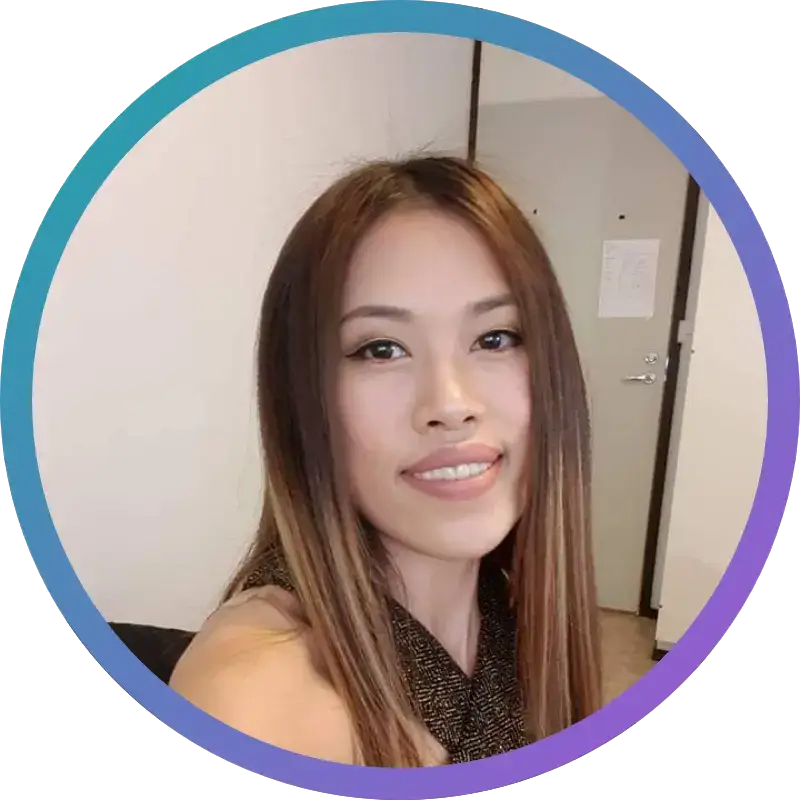Search engine optimization (SEO) emerged in the mid-1990s as the internet grew. Initially focused on keyword stuffing and directory submissions, SEO evolved with the rise of Google's PageRank algorithm in the late 1990s. Major updates like Panda and Penguin in the 2010s targeted low-quality content and manipulative link-building. Mobile optimization, voice search, and visual search have become essential in recent years. The field continues to adapt to technological advancements and changing user behaviors. Further exploration reveals the intricate strategies shaping modern SEO practices.
Essential Insights
- SEO originated in the mid-1990s, with the term coined in 1997, as early search engines like AltaVista and Yahoo Directory emerged.
- Google's PageRank algorithm in the late 1990s shifted focus from on-page optimization to include off-page factors like backlinks.
- Major algorithm updates like Panda (2011) and Penguin (2012) targeted low-quality content and manipulative link-building practices.
- Mobile-first indexing, voice search optimization, and visual search have become crucial aspects of modern SEO strategies.
- The evolution of SEO tools and analytics platforms has enabled more sophisticated keyword research, ranking analysis, and performance tracking.
The Birth of SEO: Mid-1990s Origins
The start of Search Engine Optimization (SEO) goes back to the mid-1990s.
This was a time when more people started using the internet. Early search engines began to pop up, too.
The term "SEO" became official in 1997. _John Audette_ first used it for the Jefferson Starship website on February 15, 1997.
Back then, search engines were mostly directories.
Platforms like DMOZ and Yahoo Directory were very important. They helped decide how websites were ranked.
I've been an SEO expert for 10 years, and it's amazing to see how it all started.
Early Search Engines and Directory-Driven Results
In the mid-1990s, the World Wide Web was getting bigger.
Early search engines came to help people find their way.
AltaVista, *Excite*, and Lycos started in 1994. They used directory-driven results a lot.
*DMOZ* and Yahoo Directory were important back then.
These search engines were in a strong competition. This set the stage for *SEO* practices in the late 1990s.
The fierce rivalry among early search engines laid the foundation for SEO strategies, shaping the digital marketing landscape of the late 1990s.
I've been an *SEO expert* for 10 years.
I've seen how this history shaped the way we do *SEO* today. Understanding the past helps us improve for the future.
Coining the Term: SEO Emerges in 1997
The term "SEO" emerged in the digital marketing environment in 1997, marking a significant milestone in the industry's evolution.
John Audette of Multimedia Marketing Group is credited with popularizing the term while working on the Jefferson Starship website in February of that year.
This coining of "SEO" formalized the practice of optimizing websites for search engines, which had previously been referred to using various descriptors like search engine placement and ranking.
First SEO Mentions
When did people first start using the term "SEO" in digital marketing?
The term "SEO" was first used in February 1997.
John Audette came up with it.
This was a big step for digital marketing.
Before this, people used different words for search engine work.
Here's a quick look at some important moments:
1997: SEO is named.
It helped everyone use the same words.
1999: The first SES conference happened.
This made the industry more formal.
2000: The Google Toolbar came out.
It let people see PageRank.
Jefferson Starship Anecdote
The Jefferson Starship anecdote is a famous story in the world of SEO.
In 1997, the band's manager was upset because their website wasn't showing up high in search results.
This problem helped create the term _"SEO"_.
Two people, Bob Heyman and Leland Harden, are credited with coming up with the term.
However, John Audette had used the term earlier that year, on February 15, for the band's website.
This is an important story for anyone interested in SEO.
It shows how our field has grown and changed over the years.
On-Page Optimization: The First SEO Frontier
On-page optimization is where SEO started back in the mid-1990s.
Back then, people focused on a few key things:
- Keyword density: How often a word appears on a page.
- HTML accuracy: Making sure the code is correct.
- Meta tag optimization: These are like labels for your web page.
- Title tag optimization: The title you see in search results.
- Content relevance: Making sure the content matches what people are searching for.
These were the building blocks of on-page SEO.
At first, it was all about putting lots of keywords in.
But then things got smarter.
Search engines got better at understanding what people wanted.
So, we had to change how we worked.
Now, we focus more on how user-friendly and high-quality the content is.
This is how on-page optimization has evolved over time.
It's a mix of art and science.
That's why it's still so important today.
The Google Revolution: PageRank and Link Analysis
In the late 1990s, something big happened in search engine optimization.
Google came up with a new idea called the *PageRank algorithm*.
This new way looked at the number and quality of links to a webpage.
It helped decide how important a webpage was.
Before PageRank, search engines focused mostly on what was on the page.
But now, they also looked at what was happening *off the page*.
This changed how search engines ranked websites.
In 2000, Google teamed up with Yahoo.
This partnership made Google more popular.
It helped Google become a leading force in the search market.
Rise of Off-Page SEO: The Importance of Backlinks
In the early 2000s, Google changed the way we think about SEO.
They introduced the PageRank algorithm.
This made off-page SEO very important.
Backlinks became a key factor for ranking websites.
Here's what happened next:
- People started to care more about link authority and relevance.
- We created ethical ways to build links.
- New tools for analyzing backlinks came out.
- Everyone saw how important high-quality backlinks are for credibility.
- Google updated its algorithm to stop spammy practices.
I've been an SEO expert for 10 years.
I've seen how these changes shape the world of SEO.
Our agency can help you navigate these waters.
Algorithm Updates: Combating Spam and Keyword Stuffing
Search engines have been fighting against spam and keyword stuffing for a long time.
This battle started in the late 1990s.
Major updates like Florida in 2003 and Caffeine in 2010 helped make search results better. They focused on quality content and made search results faster.
In 2005, the introduction of nofollow tags helped manage link power.
The Panda update in 2011 and Penguin in 2012 improved how search engines rank sites. They aimed at low-quality content and tricky link-building methods.
These changes help create a better web experience for everyone.
As an SEO expert for 10 years, I know how important these updates are.
Local SEO: Catering to Geographic Intent
In the early 2000s, search engines changed a lot.
They started to care more about where users were. This is how local SEO began.
Local SEO helps people find local businesses better.
In 2004, Maps Plus Box was introduced. This made it easier to see businesses on a map.
Nofollow tags were created to stop spam. These tags help keep search results clean.
We also work on Google My Business listings. This helps businesses show up in local searches.
Now, search results are mobile-friendly too. This means you can find services near you on your phone.
All these changes make finding local businesses easier. They also help businesses grow in their areas.
As an SEO expert for 10 years, I know how important this is. We focus on location to improve user experience.
Local SEO is key for businesses looking to succeed in their local markets.
The Impact of Social Media on Search
In the late 2000s, social media started to change the internet in a big way.
People thought that social media likes and shares might change where you show up in search results.
But Google said that wasn't true.
Still, using social media in marketing helped people see you online.
Social media marketing became a powerful tool for boosting online visibility, enabling broader content distribution and increased website traffic.
It made it easier to share content and get more links to your site.
_Google buying YouTube_ showed how important video is for search results.
Mobile SEO: Optimizing for Smartphones and Tablets
Mobile devices have changed how we use the internet. This means we need new ways to make websites easy to find and use.
Here are some key things in mobile SEO:
- Mobile-first indexing: Search engines look at mobile versions of sites first.
- Responsive design: Websites need to fit all screen sizes.
- Page load speed: Pages should load fast.
- Local SEO: It's more important now to show up in local searches.
- Accelerated Mobile Pages (AMP): These pages load quickly on mobile.
These changes show that mobile browsing is big. Websites must work well on small screens and with different internet speeds.
Content Is King: Quality Over Quantity
High-quality content is the key to good SEO.
Even though making sure websites work well on phones is important, having great content matters the most.
In the early 2000s, search engines started to fight against keyword spamming.
This means they wanted valuable information instead of a lot of words.
In 2003, Google made a big change with its Florida update.
It punished websites using spammy tricks and rewarded websites that were user-friendly.
In 2007, Google launched Universal Search.
This added different types of content, like videos and images, to search results.
So, websites needed a holistic strategy.
By 2010, how fast a site loads became important for ranking.
This showed that delivering content quickly helps users have a better experience.
Voice Search and Natural Language Processing
The rise of voice search technology, spearheaded by virtual assistants like Siri and Alexa, marked a significant shift in search behavior towards more conversational queries.
This transformation necessitated advancements in natural language processing (NLP) to enhance search engines' ability to interpret user intent accurately.
As a result, SEO strategies evolved to prioritize long-tail keywords, question-based content, and structured data optimization, aligning with the natural language patterns of voice search queries.
Voice Search Revolution
Voice Search Revolution
The voice search revolution is changing how we do search engine optimization (SEO).
It's also changing how we use natural language processing (NLP).
More than 50% of searches will be voice-based by 2025.
This means people talk to their devices instead of typing.
We now focus on question-based phrases and long-tail keywords.
This helps us understand what people are really looking for.
Did you know?
76% of smart speaker users do local searches.
So, it's important to think about how people search for things nearby.
We also pay attention to featured snippets.
These are quick answers that voice search devices often use.
With NLP advancements, we can now handle conversational queries better.
This means we adapt to the way people naturally speak.
Understanding these changes helps us stay ahead in SEO.
It also helps our clients reach more people.
NLP Enhances Search Accuracy
Natural language processing, or NLP, has changed how we understand search accuracy.
It is especially helpful for voice search.
NLP looks at semantics instead of just keywords.
This helps search engines know what people really mean when they search.
In 2019, Google made a big change with its BERT algorithm.
This update made it easier to find answers to complex questions.
As more people use voice searches, SEO strategies have also changed.
Now, we focus on making content that sounds like how people talk.
We also make sure it answers questions.
This way, we help people find what they need more easily.
Video SEO: The YouTube Effect
When Google bought YouTube in 2006, everything changed for search engines.
This began the big shift to video SEO.
It changed how we make content and how search results work.
Here's what happened:
- We got video-rich snippets.
- Engagement metrics became super important.
- Video metadata needed to be just right.
- Videos had to be mobile-friendly.
- YouTube started showing up in search results.
These changes meant we needed new ways to make and improve content.
Video became a big part of digital marketing plans.
I've been in SEO for 10 years, and I can say video is key!
E-commerce SEO: Optimizing for Online Stores
E-commerce SEO is super important for online stores.
It helps them show up in search results, get more visitors, and sell more products.
To do this, we focus on things like product descriptions, metadata, and using great images.
Mobile optimization is also key.
By 2025, over 54% of shopping online will be on phones.
Here's a quick look at some strategies:
Keyword Targeting is about picking the right words.
This makes your store show up higher in search results.
Structured Data helps search engines understand your site better.
This can lead to *rich snippets* in search results.
Backlink Building means getting other sites to link to yours.
This boosts your site's authority and gives you a *competitive edge*.
With over ten years of experience in SEO, we know how to make your online store shine!
Technical SEO: Site Speed and User Experience
As search engines evolved, technical aspects of websites became increasingly important for SEO.
Page load optimization emerged as a crucial factor, with Google introducing site speed as a ranking signal in 2010.
The shift towards mobile-first indexing in 2018 further emphasized the need for fast-loading mobile sites, while the introduction of Core Web Essentials in 2020 established specific metrics for measuring user experience in search rankings.
Page Load Optimization
In 2010, Google made a big change with its Caffeine update.
This change made page load speed a key part of search engine rankings.
Now, websites need to be quick to load to rank well.
This is important for user experience too.
Here are some ways to make your site load faster:
- Minimize HTTP requests: Fewer requests mean faster load times.
- Compress and optimize images: Smaller images load quicker.
- Leverage browser caching: Save time by storing parts of your site in the user's browser.
- Reduce server response time: A quicker server means a quicker site.
- Use content delivery networks (CDNs): CDNs help get your site content to users faster.
These steps help keep your site speedy and your users happy.
I've been doing SEO for over 10 years, so trust me, this works!
Mobile-First Indexing
Mobile-first indexing changed the SEO game in 2018.
Google started focusing on mobile websites first for ranking.
This happened because more people used phones than computers by 2016.
What does this mean for us?
We need websites that work well on phones.
Pages should load fast.
The user experience should be smooth.
In 2020, Google introduced something called Core Web Essentials.
This made mobile performance even more important for SEO.
Core Web Vitals
Sure! Here's the modified text with split paragraphs:
Core Web Vitals became really important in 2020.
They are a big part of technical SEO now.
This happened after mobile-first indexing started.
Google uses three main things to check how good a website feels to users:
- Largest Contentful Paint (LCP)
- First Input Delay (FID)
- Cumulative Layout Shift (CLS)
These three things look at how fast a site loads, how quickly it responds, and how stable it looks.
Making sure these are good helps your site show up better in search results.
It also makes people happier when they visit your site.
I've been an SEO expert for 10 years, so I know it's worth the effort!
AI and Machine Learning in Search Algorithms
As search engines grew smarter, they started using AI and *machine learning* to help with searches.
This was a big change for SEO.
In 2015, Google introduced something called *RankBrain*.
It used AI to understand what people were looking for.
This made search results better.
NLP, or *Natural Language Processing*, also helped.
It lets search engines understand the meaning behind words.
This makes it easier to handle questions and voice searches.
Now, searches are more accurate and helpful.
Featured Snippets and Position Zero
The way search engines show information has changed a lot. This is because of new algorithms.
Now, we have something called Featured Snippets. They are also known as "Position Zero." These snippets show answers right at the top of the search page.
Featured Snippets, or "Position Zero," revolutionize search by displaying answers at the top, transforming how we find information online.
This change makes searching easier for everyone. It also helps websites get noticed more.
Featured Snippets appear above the usual search results. They can be in different forms like paragraphs, lists, tables, or videos.
Websites can get more clicks because of these snippets. But they need to be optimized just right.
When a snippet shows up, it means Google trusts that content.
As an SEO expert with 10 years of experience, I know how important these snippets are. They can really boost your website's success!
The Rise of Visual Search
Visual search is changing the way we use the internet.
It's a new tool that lets people search using pictures.
Every month, there are over 2 billion searches using pictures.
Platforms like Google Lens and Pinterest Lens are leading this trend.
AI technology helps make picture searches more accurate.
This is important for finding products and for SEO.
| Visual Search Impact | User Preference | SEO Strategy |
|---|---|---|
| 2 billion monthly searches | 62% of millennials like visual search | Image optimization |
| Better accuracy | Easier to find products | Descriptive file names |
| AI integration | User-friendly experience | Structured data |
As an SEO expert for 10 years, I know that image optimization is key.
Using descriptive file names helps search engines understand your images.
Implementing structured data can improve your site's visibility.
Visual search is the future.
Make sure your website is ready!
SEO Tools and Analytics: Measuring Success
SEO tools and analytics platforms have changed a lot since the early 2000s. They help us see how well our websites are doing.
These tools give us important info about:
- *Keyword research and ranking*
- *Website traffic analysis*
- *Search query data*
- *Indexing and crawl errors*
- *XML sitemap submission*
Google Analytics and Webmaster Tools (now called *Search Console*) are must-haves for anyone in SEO. They show us how users behave, how our site is performing, and how visible we are in searches.
As an SEO expert with 10 years of experience, I can say these tools make a big difference. They help us understand and improve our websites in a smart way.
Ethical SEO: White Hat Practices in the Modern Era
As search engines evolved, ethical SEO practices, known as "white hat" techniques, gained prominence in the industry.
These practices prioritize creating high-quality, valuable content that naturally attracts users and search engines alike.
White hat SEO strategies focus on sustainable methods for improving search rankings, including optimizing website structure, enhancing user experience, and implementing legitimate link-building tactics that align with search engine guidelines.
Quality Content Focus
The start of the 21st century brought big changes to search engine optimization.
We saw a big shift towards quality-focused content.
This means creating content that is valuable and user-friendly.
*No more* filling pages with keywords just to trick the system.
Search engines started punishing these tricks.
They introduced nofollow tags to stop fake link building.
Now, getting links is about real and honest work.
It's all about earning links through quality content.
User experience became a big deal for search rankings too.
These changes show that search engines want real, helpful content.
They prefer this over sneaky tricks.
Link Building Strategies
In today's world of SEO, building links the right way is super important.
It's like planting seeds for online success.
White hat practices mean doing things the honest way.
It's all about making great content that grabs the attention of good websites.
These sites then give you backlinks, which are like votes of trust.
You can try things like *guest blogging* or joining chats in industry forums.
Even local SEO tricks can help you make friends and show you're an expert.
These ways of building links follow the rules of search engines.
They help your site grow strong and stay visible for a long time.
Final Thoughts
The evolution of SEO over the past two decades shows how the internet and search technology keep changing.
From its start in the mid-1990s, SEO has grown from simple keyword use to a complex field.
Today, it covers technical, content, and user experience factors.
As search engines get better at refining their algorithms, SEO experts need to adapt.
They must embrace ethical practices and come up with new strategies.
This helps them stay visible in a competitive digital world.
For those looking to boost their online presence, consider our Google Autosuggest Creation Service, iGaming SEO, and professional SEO services to stay ahead.
